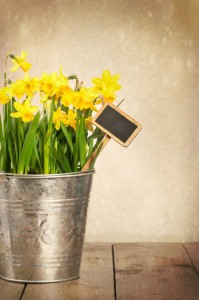Garden Markers Share Space as Seasons Begin to Change
 Some of your early summer crops are being harvested and clumps of disturbed earth where plants were uprooted are beginning to populate your yard like a prairie dog town. As those plants begin to disappear until next year, they leave a little space for you to plant some fall season vegetables. As you transition your garden plants from summer to fall, garden markers can help you designate where to plant your cooler weather plants.
Some of your early summer crops are being harvested and clumps of disturbed earth where plants were uprooted are beginning to populate your yard like a prairie dog town. As those plants begin to disappear until next year, they leave a little space for you to plant some fall season vegetables. As you transition your garden plants from summer to fall, garden markers can help you designate where to plant your cooler weather plants.
Planning Ahead
Gardeners often seem ready for spring. Our cooler or colder winter season (depending on where you live) gives us ample time to dream about the flavors, colors and textures that come with the cool spring and then summer. But the transition from summer to fall is more likely to sneak up on us. We’re busy weeding, watering and harvesting when we suddenly realize we should have planted our fall seeds weeks ago. Sometimes plant markers can help us remember that the transition will be coming and that our garden is full of flavor nearly year-round.
Staking For the Season
Some summer crops will remain with us and produce until the first hard frost. Other summer plants will be harvested and plucked from the earth, leaving a nice spot to put in the next crop. Garden markers could come in handy in those rotational spots. You may choose to put both your summer and fall markers out at the same time to help you remember to get those crops in early enough to produce before the first frost. You can even put the season name underneath the plant name. For those of you who are experts with garden time and always remember when to plant, you may just want to swap out your garden markers when you put your fall seedlings in the ground.
Timing Your Planting Just Right
There is no one certain time to plant autumn plants. It depends upon each plant’s growth cycle. The days it takes to mature vary from plant to plant. Modern Farmer online suggests that the best way to find out exactly when you should plant is to look at how many days it takes for your plant to mature. Next, find out the average first day of frost for your region’s plant season. Since you want to make sure that your plant has plenty of time to mature, subtract the number of days it takes for the plant to mature from the date of your first frost. Then, just to be sure an early frost won’t get your plants, give yourself some plant insurance with subtracting a few more days.
If you want to personalize your garden markers by putting the names of seasons on the plate with the plant’s name, Kincaid Garden Markers can provide just the marker for you. Our stainless steel posts and plates can weather all the seasons and help you get your next season’s garden off to a timely start.
